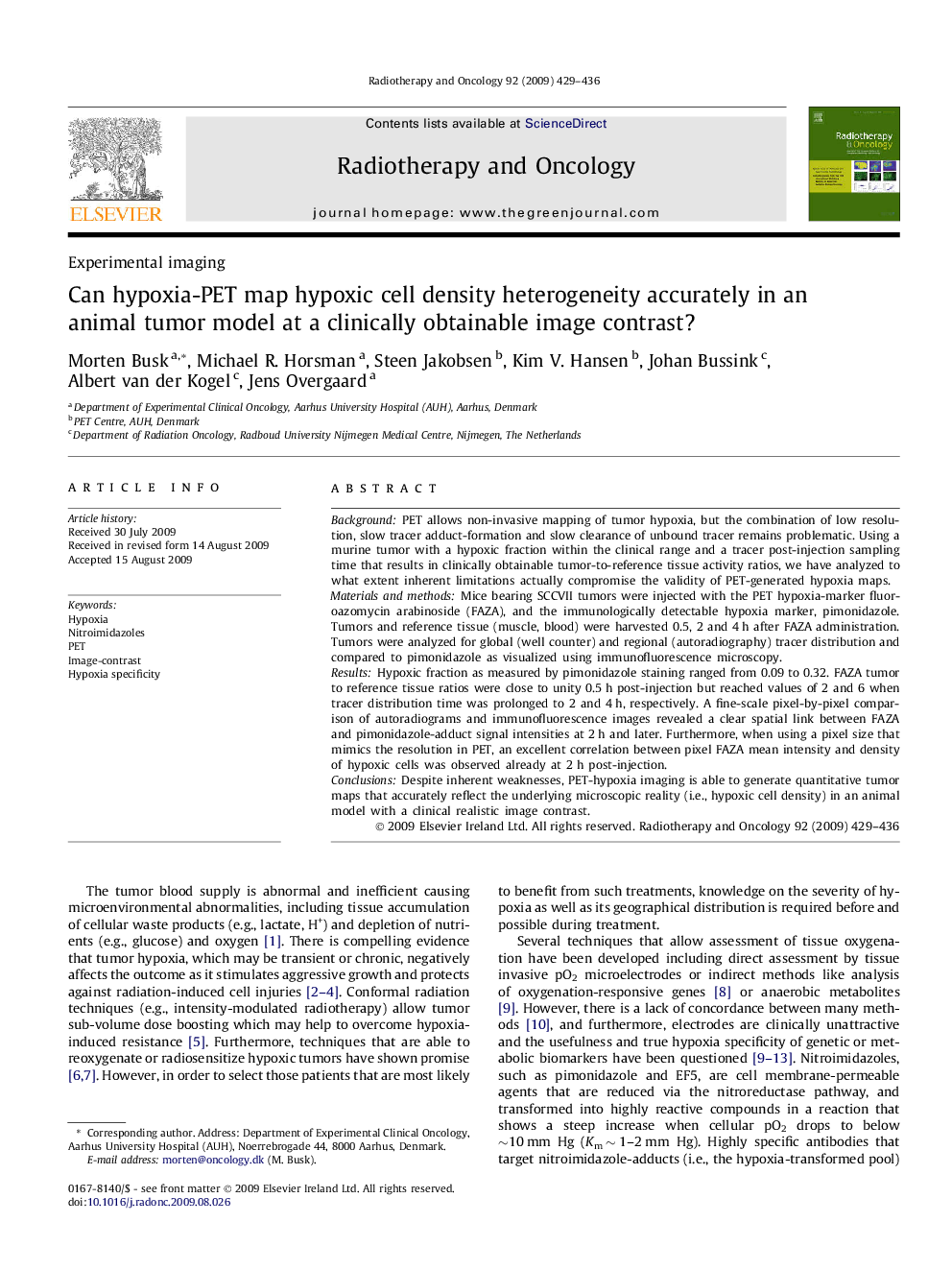| کد مقاله | کد نشریه | سال انتشار | مقاله انگلیسی | نسخه تمام متن |
|---|---|---|---|---|
| 2158919 | 1090845 | 2009 | 8 صفحه PDF | دانلود رایگان |

BackgroundPET allows non-invasive mapping of tumor hypoxia, but the combination of low resolution, slow tracer adduct-formation and slow clearance of unbound tracer remains problematic. Using a murine tumor with a hypoxic fraction within the clinical range and a tracer post-injection sampling time that results in clinically obtainable tumor-to-reference tissue activity ratios, we have analyzed to what extent inherent limitations actually compromise the validity of PET-generated hypoxia maps.Materials and methodsMice bearing SCCVII tumors were injected with the PET hypoxia-marker fluoroazomycin arabinoside (FAZA), and the immunologically detectable hypoxia marker, pimonidazole. Tumors and reference tissue (muscle, blood) were harvested 0.5, 2 and 4 h after FAZA administration. Tumors were analyzed for global (well counter) and regional (autoradiography) tracer distribution and compared to pimonidazole as visualized using immunofluorescence microscopy.ResultsHypoxic fraction as measured by pimonidazole staining ranged from 0.09 to 0.32. FAZA tumor to reference tissue ratios were close to unity 0.5 h post-injection but reached values of 2 and 6 when tracer distribution time was prolonged to 2 and 4 h, respectively. A fine-scale pixel-by-pixel comparison of autoradiograms and immunofluorescence images revealed a clear spatial link between FAZA and pimonidazole-adduct signal intensities at 2 h and later. Furthermore, when using a pixel size that mimics the resolution in PET, an excellent correlation between pixel FAZA mean intensity and density of hypoxic cells was observed already at 2 h post-injection.ConclusionsDespite inherent weaknesses, PET-hypoxia imaging is able to generate quantitative tumor maps that accurately reflect the underlying microscopic reality (i.e., hypoxic cell density) in an animal model with a clinical realistic image contrast.
Journal: Radiotherapy and Oncology - Volume 92, Issue 3, September 2009, Pages 429–436